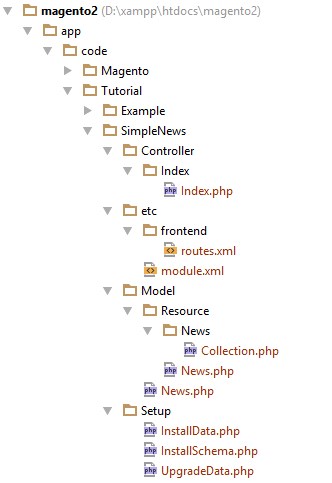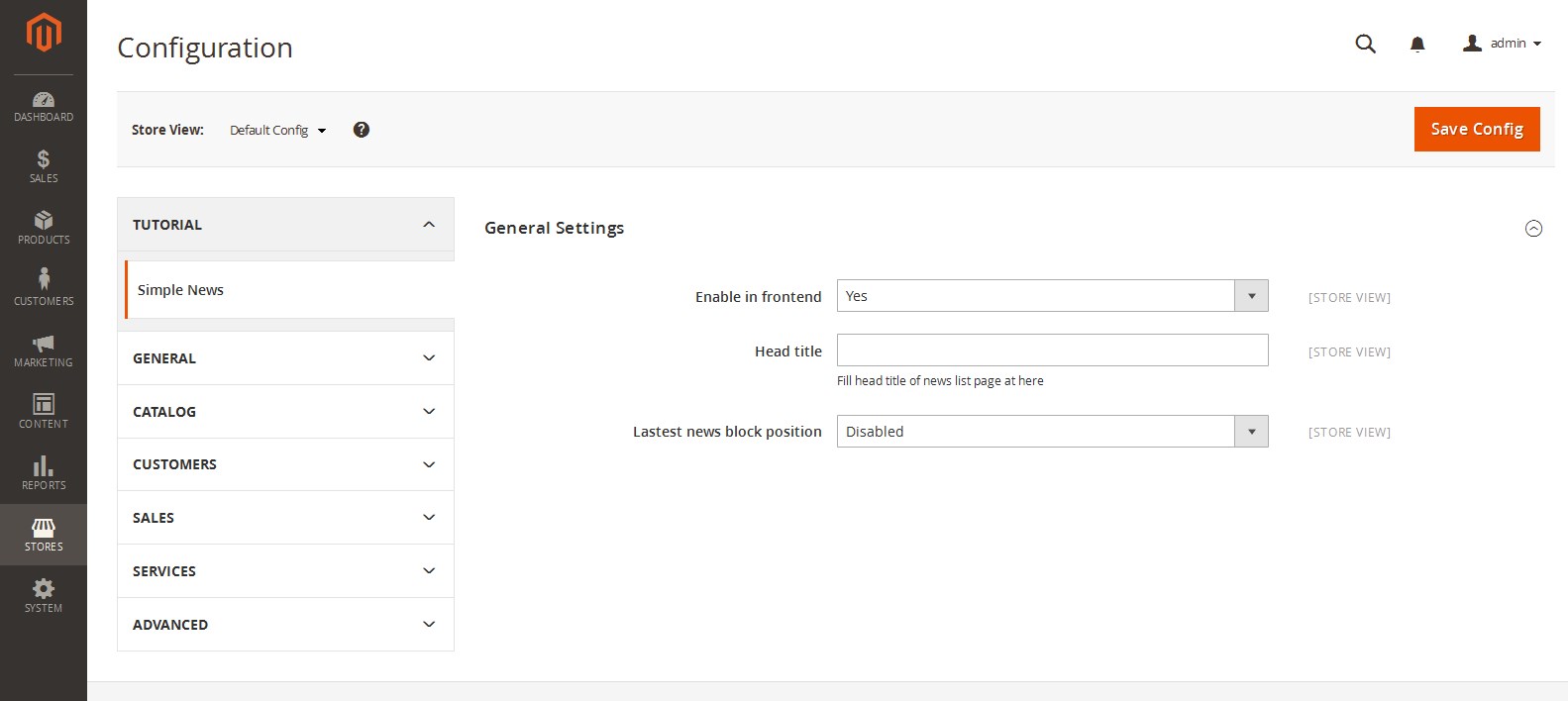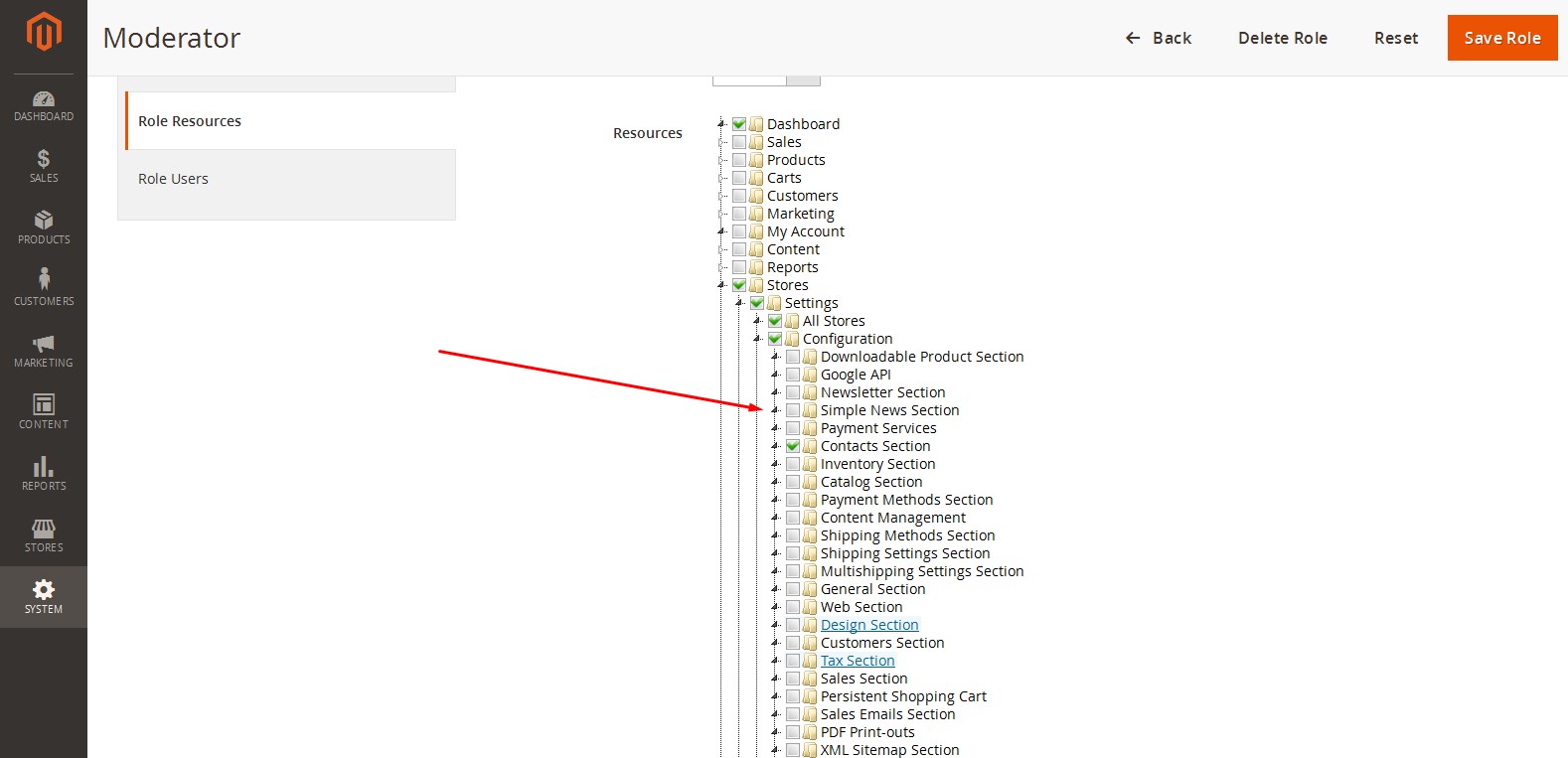How to create the configuration via backend for a custom module
Hi guys,
How are you today? Are you ready for our next lesson on Magento 2.0?
Let‘s see what we have learnt from last tutorials:
1. How to create a simple module in Magento 2
2. Create a module with custom database table in Magento 2
3. How to use Model and Collection in Magento 2
In this post, I will introduce you how to create the configurations via Magento 2 backend.
We will continue using the Tutorial_SimpleNews module for this lesson and the directory structure likes the last post:

Step 1: Create configuration in Magento system configuration.
– Create file: app/code/Tutorial/SimpleNews/etc/adminhtml/system.xml (Purpose: This file will declare your configurations in Stores > Settings > Configuration section) and insert this following code into it:
- <?xml version=“1.0”?>
- <config xmlns:xsi=“http://www.w3.org/2001/XMLSchema-instance”
- xsi:noNamespaceSchemaLocation=“../../../Backend/etc/system_file.xsd”>
- <system>
- <tab id=“tutorial” translate=“label” sortOrder=“1”>
- <label>Tutorial</label>
- </tab>
- <section id=“simplenews” translate=“label” sortOrder=“1” showInDefault=“1”
- showInWebsite=“1” showInStore=“1”>
- <label>Simple News</label>
- <tab>tutorial</tab>
- <resource>Tutorial_SimpleNews::system_config</resource>
- <group id=“general” translate=“label” type=“text” sortOrder=“1” showInDefault=“1”
- showInWebsite=“1” showInStore=“1”>
- <label>General Settings</label>
- <field id=“enable_in_frontend” translate=“label” type=“select” sortOrder=“1”
- showInDefault=“1” showInWebsite=“1” showInStore=“1”>
- <label>Enable in frontend</label>
- <source_model>MagentoConfigModelConfigSourceYesno</source_model>
- </field>
- <field id=“head_title” translate=“label comment” type=“text” sortOrder=“2”
- showInDefault=“1” showInWebsite=“1” showInStore=“1”>
- <label>Head title</label>
- <comment>Fill head title of news list page at here</comment>
- <validate>required-entry</validate>
- </field>
- <field id=“lastest_news_block_position” translate=“label” type=“select”
- sortOrder=“3” showInDefault=“1” showInWebsite=“1” showInStore=“1”>
- <label>Lastest news block position</label>
- <source_model>
- TutorialSimpleNewsModelSystemConfigLastestNewsPosition
- </source_model>
- </field>
- </group>
- </section>
- </system>
- </config>
As you see, I used a custom source model in this file (TutorialSimpleNewsModelSystemConfigLastestNewsPosition), we will learn more about it with the step 2.
Step 2: Create a custom source model.
– Create file: app/code/Tutorial/SimpleNews/Model/System/Config/LastestNews/Position.php and insert this following code into it:
- <?php
- namespace TutorialSimpleNewsModelSystemConfigLastestNews;
- use MagentoFrameworkOptionArrayInterface;
- class Position implements ArrayInterface
- {
- const LEFT = 1;
- const RIGHT = 2;
- const DISABLED = 0;
- /**
- * Get positions of lastest news block
- *
- * @return array
- */
- public function toOptionArray()
- {
- return [
- self::LEFT => __(‘Left’),
- self::RIGHT => __(‘Right’),
- self::DISABLED => __(‘Disabled’)
- ];
- }
- }
This custom source model will return values (Left, Right, Disabled) for the select box.
Step 3: Create a role for this configuration section.
– Create file: app/code/Tutorial/SimpleNews/etc/acl.xml (Purpose: This file will create a role for your configuration section) and insert this following code into it:
- <?xml version=“1.0”?>
- <config xmlns:xsi=“http://www.w3.org/2001/XMLSchema-instance”
- xsi:noNamespaceSchemaLocation=“../../../../../lib/internal/Magento/Framework/Acl/etc/acl.xsd”>
- <acl>
- <resources>
- <resource id=“Magento_Backend::admin”>
- <resource id=“Magento_Backend::stores”>
- <resource id=“Magento_Backend::stores_settings”>
- <resource id=“Magento_Config::config”>
- <resource id=“Tutorial_SimpleNews::system_config”
- title=“Simple News Section” />
- </resource>
- </resource>
- </resource>
- </resource>
- </resources>
- </acl>
- </config>
Step 4: Set default values for the configurations.
– Create file: app/code/Tutorial/SimpleNews/etc/config.xml and insert this following code into it:
- <?xml version=“1.0”?>
- <config xmlns:xsi=“http://www.w3.org/2001/XMLSchema-instance”
- xsi:noNamespaceSchemaLocation=“../../Core/etc/config.xsd”>
- <default>
- <simplenews>
- <general>
- <enable_in_frontend>1</enable_in_frontend>
- <head_title>Tutorial – Simple News</head_title>
- <lastest_news_position>1</lastest_news_position>
- </general>
- </simplenews>
- </default>
- </config>
These configurations are same in Magento 1.x.
Finally, access to the backend site and see your result in Stores > Settings > Configuration section:

And this is the additional role (System > Permissions > User Roles):
